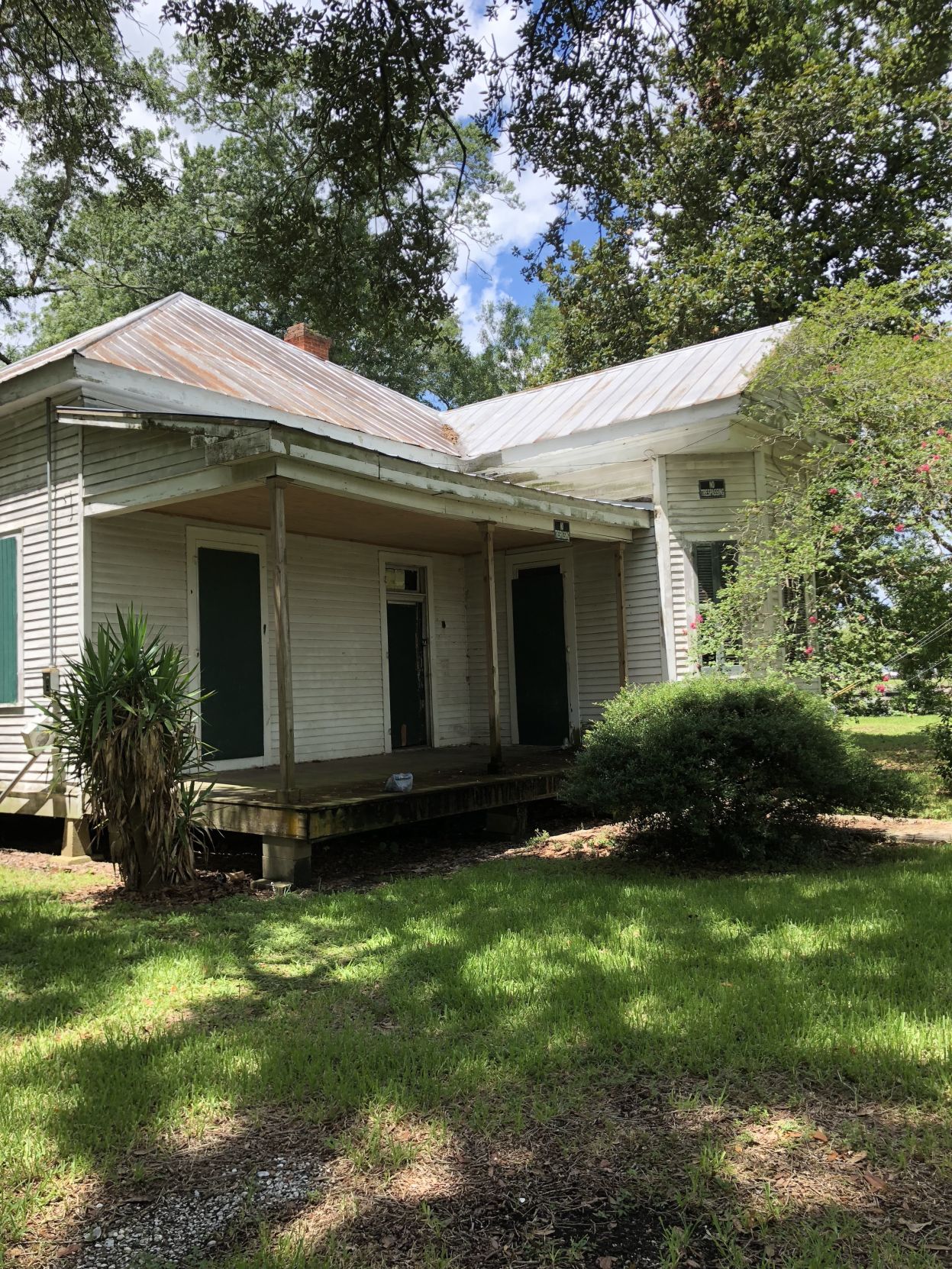
Attorney’s letter raises rec district concerns
July 11, 2018
Raising Water Safety in Houma
July 11, 2018One of the oldest houses in Houma — believed to have been built priot to the Civil War — has been listed by Terrebonne officials for demolition.
The owner of the Dunn-Gagne house, situated at the junction of the Gulf Intracoastal Waterway and Bayou Terrebonne, will plead for more time when the Terrebonne Parish Council meets July 23, as preservationists look for potentials to save it.
But no firm commitments are forthcoming at this point.
Preservation advocates say the house’s perilous status is emblematic of inherent problems related to saving structures in the Bayou Country, where humidity, neglect and lack of widespread interest have resulted in bulldozing of many precious sites that were part of the area’s living history.
“It is very heartbreaking for me,” said Dorothy Trotter-Robichaux, the owner of the house at 8308 Main Street. “My great-grandfather built the house.”
The precise age of the house is not known, although it was certainly built after the 1851 marriage of Sarah Dunn to Joseph Gagne. Sarah was the daughter of J.B. Dunn, who owned a landmark brickyard in Houma on the street that now bears his family’s name, according to various accounts including one on the Terrebonne Parish web site. The property itself was part of the old Honduras Plantation.
The house has the distinction of being host to hauntings related in several books and articles, including the “I Dug Up Houma-Thibodaux” series of books by Helen Wurzlow. Some of those, according to local journalist Bill Elzey, were debunked by a discovery that squirrels had been dropping pecans down the gutters.
The larger property on which the home is situated — long associated with Houma’s First Methodist Church — became home to what is now MacDonnell Children’s Services, following a long history of educational uses devoted to children who were impoverished.
The house survived the digging of the Intracoastal Waterway. The greater property is also marked by the presence of a landmark grove of live oaks, believed planted by Joseph Gagne. One tree in particular, on a lot adjacent to the house, was named for Sarah Gagne.
Behind the house is a cemetery with five graves. Most are of the owner’s family members. Another is that of a baby who allegedly lived at the MacDonnell home. A Civil War veteran is said to be among those for whom the property is a final resting place.
If the house is consigned to the wrecking ball the small cemetery — per state law — will remain unmolested. The presence of the graves is one reason why Robichaux has turned down offers in the past from potential buyers.
“My people are sleeping in the back,” said Robichaux, who lives on High Street. “I need to stay close.”
2016 COMPLAINT
Robichaux is caught in an unfortunate dilemma. Not wishing to sell the property — on which she regularly pays taxes — Robichaux cannot afford the work that would restore the property to a point where it would no longer be considered a “public nuisance” under parish rules.
The house first drew official attention on Nov. 4, 2016 when Parish Council member Christa Duplantis-Prather sent a complaint to the parish government’s Nuisance Abatement department stating the property at 8308 Main Street was a “dilapidated structure” attracting vagrants and unsecured.
The same e-mail also cited two other properties. A house at 8342 Main St. in front of the MacDonnell home look as if “they have not used it for a while.”
Also cited were 102 and 104 Howard Avenue. which had tall grass and structural issues causing it to be “dilapidated.”
A parish inspector examined the Dunn-Gagne house at 8308 Main, and reported on Nov. 16 2016 that the house was in violation, with the structure “in fair to poor shape” with no utilities and apparently abandoned.
A notice was sent to Robichaux by certified mail which was unclaimed at De. 21, 2016, resulting in the warning of violation being published publicly according to parish ordinance requirements.
Re-inspection on Jan. 23, 2017 resulted in a finding of violation with no change and the same occurred on May 7 of this year.
Robichaux did take steps to see if the property could be salvaged.
A carpenter, Billy Achee, examined the house in June, at the request of a real estate agent who knows Robichaux. To actually once again become an occupied dwelling, he said, work would have to be done in the vicinity of $200,000.
“All the floors are going to have to come up, and the construction all those floors go under every wall,” Achee said. “I saw visually 80 percent of the subfloor eaten by termites. The upper floor looks okay but looks can be deceiving. The porch is held up by one 4×6. Someone did a little repair work but the entrance and exit doors have to be replaced, and a lot of the windows are broken out. I don’t know what condition the sashes are in. I am sure the roof has to be changed. I did not go into the attic.”
Properly restored and cared for, the house could one day be a nominee for the National Register of Historic Places. Determinations would be made as to whether it looks much as it did in the past. Documentation would also have to be accepted that the property is associated with events, activities or developments that were important in the past. Architecture, landscape and engineering history are also considered. Currently 18 properties or neighborhoods are listed.
Inclusion on the register can increase the potential for funding related to certain historical and cultural projects as well as tax benefits.
Before such a move could be considered, however the property would require restoration, enough to escape its “nuisance” branding and to be viable as a relic of Houma history.
It is seen in its current state as an example of south Louisiana’s failure to preserve many of its historic structures.
CULTURE GAP
Patty Whitney, recording secretary of the Terrebonne Genealogical Society, is among historians who say the area is lacking in resources for optimal protection of landmarks.
“It has not always been a priority in our area,” Whitney said. “Part of it is almost environmental. If you go to places out west where they have preserved ghost towns, the environment is dry. Things don’t rot as quickly. We have very few other than the big mansions and even those are susceptible to environmental degradation. Things deteriorate so rapidly we are left with very few of our historic buildings. If you try to restore and protect things there is an inordinate amount of cost involved. My though also is that we don’t have the attitude. It is not in the culture to protect what is there. People don’t see it as being important to spend money on, and that money is in only a few hands. The people who have had money percentage wise have had all the properties. Some had enough to protect and preserve. What other people had down here was considered secondary and expendable. The social implications go to culture, economy and environment. If we lived in the northeast, it would be different. They have people who have an interest in preserving and started organizations but it all takes money.”
One Bayou State organization that does take protection of the past seriously is the Louisiana Trust for Historic Preservation.
Founded in 1979, the Trust advocates, promotes and preserves historic places in the state.
They also work with various programs that can assist owners who wish to preserve historic properties, and publish a list of historic properties that are endangered.
SUPPORT FOR REPRIEVE
Brian Davis, who heads up the Trust’s revolving fund, plans to visit the Dunn-Gagne site — if Robichaux can win even a temporary reprieve from the Parish Council — to see if its programs could be used to save the structure.
“We meet with owners of buildings to see about acquiring them through donation or purchase, or option to purchase,” said Davis, who was unaware of the Dunn-Gagne house but was contacted by The Times. “Through donations or purchases we have money we can put toward stabilizing it or get it to a marketable point. We get no direct financial benefit from the property.”
Among the potentials are grants that are used to save properties threatened by demolition due to neglect.
Whether Robichaux’s reluctance to sell will affect the array of potentials is yet to be seen.
Rick Larkin, whose tour of historic oaks in Lafourche Parish has of late increased in popularity, is familiar with the Dunn-Gagne house and the property’s oaks. He is hopeful, in the interests of preservation, that Robichaux will be flexible if she has an opportunity to consider options.
“None of us is going to live forever and when she is gone somebody is going to take it all down and put up a handi-mart or something,” Larkin said.
Among those with the power to allow more time is Councilwoman Duplantis-Prather, who initiated the first complaint.
“It would be nice to keep that historic building,” she said. “I didn’t ask them to tear the structure down.”













